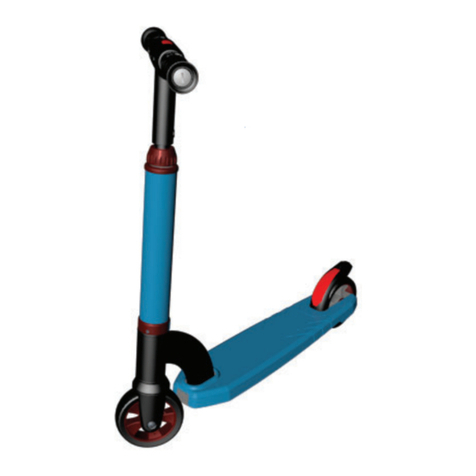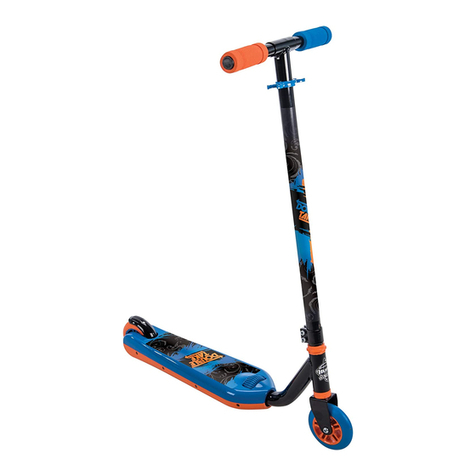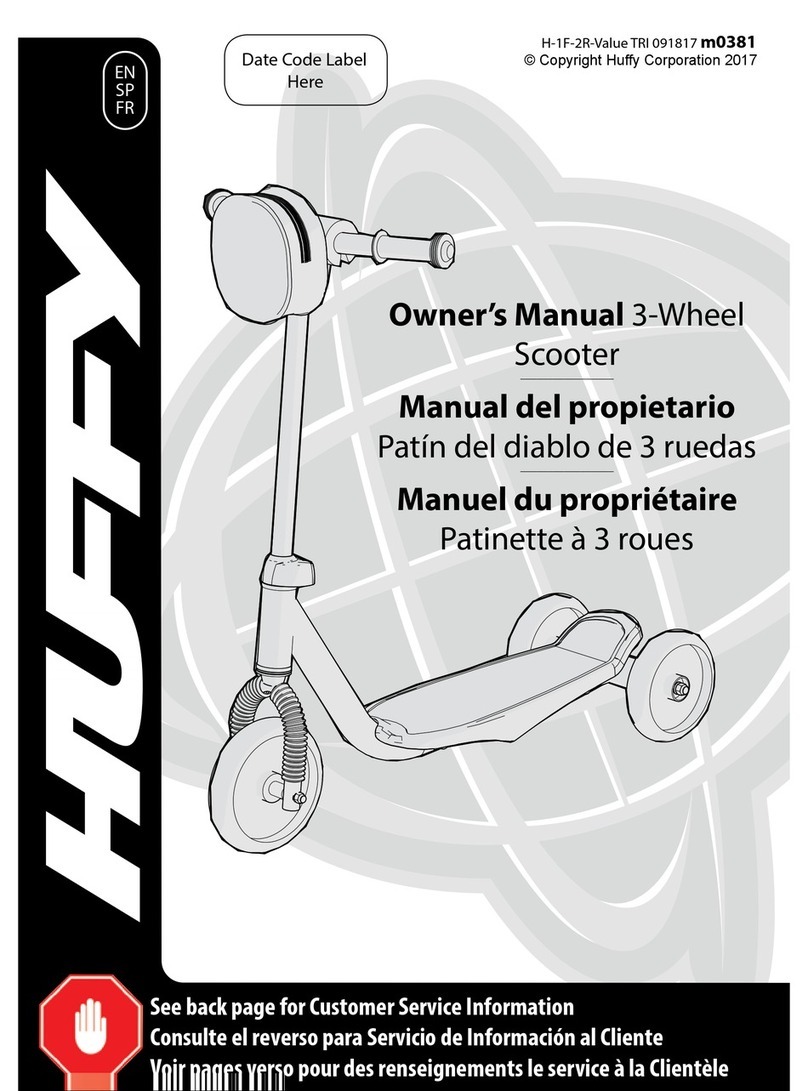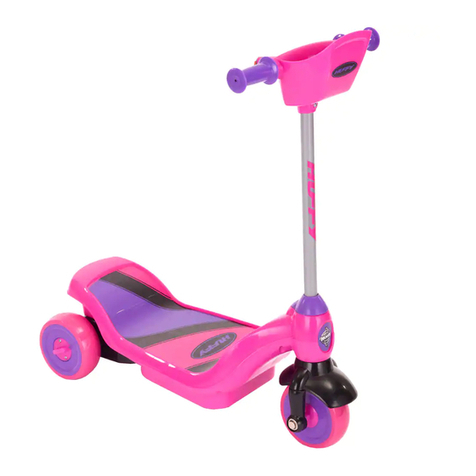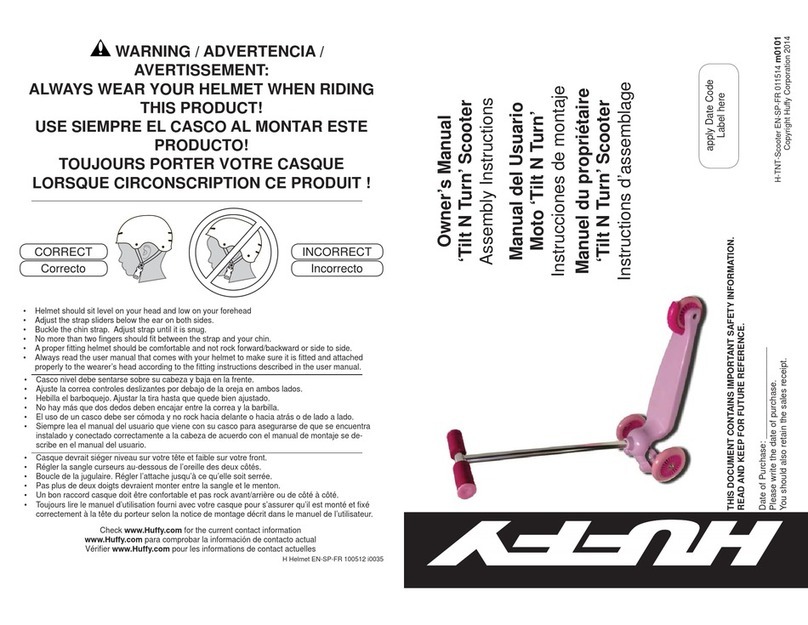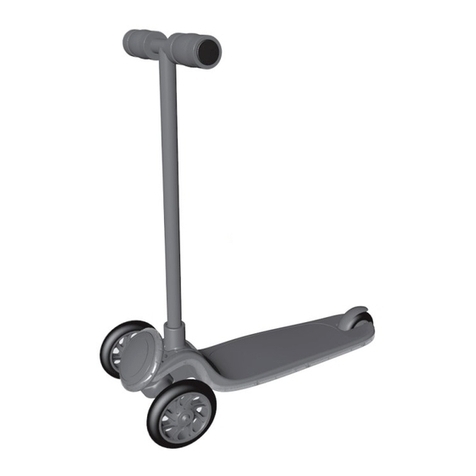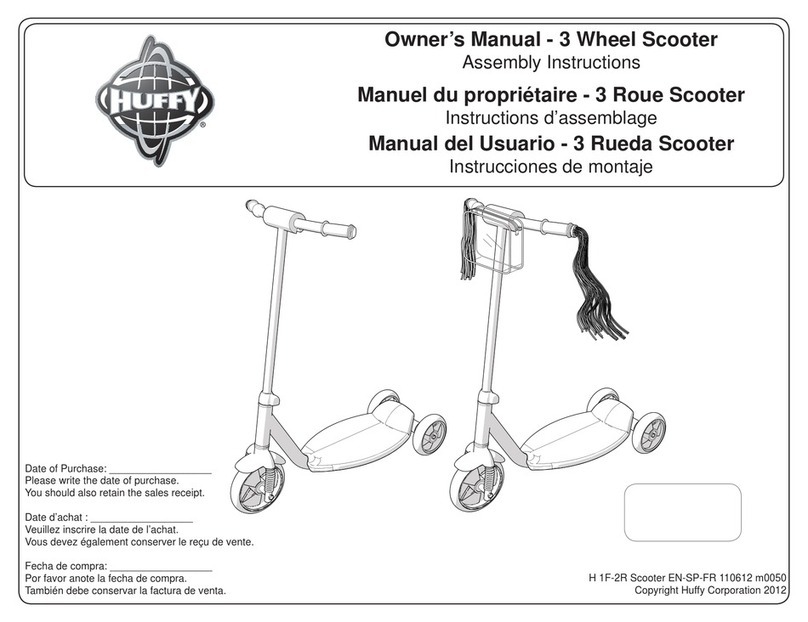18
Limited Warranty
General:
• Part or model specications are subject to
change without notice.
• This Limited Warranty is the only warranty
for the product. There are no other express
warranties.
• The only uses for this product are described
in this manual.
• Warranty registration is not required.
• The Limited Warranty extends only to the
original consumer and is not transferable to
anyone else.
What does this Limited Warranty cover?
This Limited Warranty covers all parts of the
product except those indicated below as not
warranted.
What must you do to keep the Limited
Warranty in eect?
This Limited Warranty is eective only if:
• Product is completely and correctly
assembled.
• Product is used under normal conditions
for its intended purpose (see the following
section for excluded activities).
• Product receives all necessary maintenance
and adjustments.
• Product is used for general transportation
and recreational use only.
What is not covered by this Limited
Warranty?
This product is designed for recreational use only.
This Limited Warranty does not cover normal
wear and tear, normal maintenance items, or any
damage, failure, or loss that is caused by improper
assembly, maintenance, adjustment, storage, or
use of the product.
This Limited Warranty will be void if the
product is ever:
• Used in any competitive sport
• Used for stunt riding, jumping, aerobatics or
similar activity
• Modied in any way
• Modied with the addition of a motor
• Ridden by more than one person at a time
• Rented, sold, or given away
• Used in a manner contrary to the instructions
and warnings in this Owner’s Manual
Huy will not be liable for incidental or
consequential loss or damage due directly or
indirectly from use of this product. Some States do
not allow the exclusion or limitation of incidental
or consequential damages, so the above limitation
may not apply to you.
What will Huy do?
Huy will replace, without charge to you, any part,
or component found to be defective by Huy.
How do you get service?
Contact the Customer Service Department.
• See included list for Customer Contact
information or visit www.huybikes.com/
contact.
What rights do you have?
This warranty gives you specic legal rights. You
may also have other rights which vary from State
to State.
This product meets ASTM F963 and CPSIA
requirements for electric vehicles.
Warranty
For how long does this Limited Warranty
last?
• Drive Battery - 30 days
• Electronics - 90 days
• All other Components - 6 months
3
WARNING: TO AVOID SERIOUS INJURY:
• It is the responsibility of the adult to educate
the child and determine if they are capable of
operating the vehicle safely.
• Before using the vehicle the child must
understand the controls and safety issues.
They must also demonstrate the capability
and skill to handle the vehicle and operate its
controls to avoid falls or collisions.
• After complete assembly, remove and dis-
pose of all protective material and poly bags.
Keep poly bags away from child. Be sure to
remove all packaging materials and parts
from underneath the vehicle body.
• Ensure child uses common sense and safe
practices when using the vehicle.
• All of these safety rules and guidelines
must be followed or serious injury or
death may occur to the user:
• Adult assembly required. Choking hazard
to children under the age of 3 years - con-
tains small parts. Keep small children away
when assembling.
• To reduce the risk of injury, adult supervi-
sion is required. Never use in roadways,
near motor vehicles, on or near steep
inclines or steps, swimming pools or other
bodies of water; always wear shoes, and
never allow more than one (1) rider.
• RISK OF FIRE. Do not bypass fuse. Replace
only with size and type.
• Continuous adult supervision required while
using the vehicle.
• Riders should always wear a properly tted
helmet that complies with U.S. Consumer
Product Safety Commission CPSC) Standard
16 CFR 1203.
• Body parts such as hands, legs, hair and
clothing can get caught in moving parts.
Never place a body part near a moving
part or wear loose clothing while using the
vehicle.
• Always use vehicle in a safe, secure environ-
ment on at, smooth paved surfaces only.
• Do not use the vehicle in an unsafe man-
ner or at an unsafe speed.
Examples include but are not limited to:
• Do not pull or push the vehicle with an-
other vehicle or similar device.
• Do not tow anything behind the vehicle.
• Do not drive into xed objects, which may
cause the wheels to spin, causing the mo-
tor to overheat.
• Never use near streets, water, swimming
pools, hills, steps, drop-os, sloped sur-
faces or driveways, wet areas, ammable
vapors, in alleys, at night or in the dark.
• Do not use the vehicle in unsafe conditions
such as snow, rain, loose dirt, mud sand or
ne gravel. This may result in unexpected
action such as tip over and skidding. Using
the vehicle in loose dirt, mud, sand, or ne
gravel may damage the electronics and
gear box inside the vehicle.
• Vehicle Cautions: Do not overload the
vehicle. Do not drive in very hot weather,
components may overheat. Do not allow wa-
ter or other liquids to come in contact with
the battery or other electric components. Do
not tamper with the electrical system. Doing
so may create a short, causing the fuse to trip
or other damage including re.
• There are additional hazards of using the
vehicle in areas other than private grounds.
• Foot/Fender Brake can become hot after
use. Do Not touch with hand.
Safety and Warnings
• THIS VEHICLE HAS NO BRAKE. When
engaged, motor friction will gradually stop
the unit.
